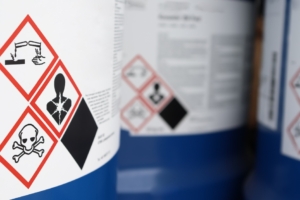The Ultimate Guide to Building a Successful Customer Acquisition Funnel

Customer acquisition is the process of acquiring new customers for a business. A well-designed customer acquisition funnel can help businesses attract and retain customers. Creating an effective customer acquisition funnel requires a deep understanding of your target audience, their needs, and the channels they use to interact with your business.
Understanding Your Target Audience
The first step in building a successful customer acquisition funnel is to understand your target audience. You need to know who your potential customers are, what their needs and pain points are, and how they interact with your business. This information will help you create a personalized experience for your customers that will keep them engaged and motivated to move through the funnel.
To better understand your target audience, you can use various tools and methods such as customer surveys, interviews, social media monitoring, and website analytics. By analyzing this data, you can create buyer personas that represent your ideal customers. This information will help you create personalized messaging and experiences for each stage of the funnel.
Mapping the Customer Acquisition Funnel
Once you have a clear understanding of your target audience, you can map out the customer acquisition funnel. The customer acquisition funnel is a visual representation of the different stages that a potential customer goes through before making a purchase. The stages usually include awareness, consideration, conversion, and loyalty.
Mapping out the funnel helps you identify potential areas for improvement and optimization. It also helps you determine what type of content and messaging to use at each stage of the funnel.
Crafting the Right Message for Each Stage
Crafting the right message for each stage of the funnel is crucial for success. You need to create messaging that resonates with your potential customers and motivates them to move through the funnel. Your messaging should be personalized and relevant to the specific stage that your potential customers are in.
For example, in the awareness stage, your messaging should be focused on creating brand awareness and educating potential customers about your products or services. In the consideration stage, your messaging should focus on highlighting the benefits of your products or services and how they can solve the customer’s pain points. In the conversion stage, your messaging should focus on creating a sense of urgency and encouraging potential customers to take action.
Identifying the Right Acquisition Channels
Identifying the right acquisition channels is crucial for the success of your customer acquisition funnel. You need to find the channels that your target audience is using to interact with your business and focus your efforts on those channels. This could include social media platforms, email marketing, search engine optimization, or paid advertising.
To identify the right acquisition channels, you can use tools such as Google Analytics and social media monitoring to track where your traffic and leads are coming from. You can also conduct surveys or interviews with your potential customers to better understand their preferences and behavior.
Implementing and Measuring Your Funnel
Once you have mapped out the funnel, crafted the right messaging, and identified the right acquisition channels, it’s time to implement and measure your funnel. This involves setting up the different stages of the funnel, creating the content and messaging for each stage, and implementing the acquisition channels.
To measure the success of your funnel, you need to set up key performance indicators (KPIs) such as traffic, leads, conversions, and customer retention. You can use tools such as Google Analytics or a customer relationship management (CRM) system to track and measure these KPIs.
Continuous Optimization and Improvement
The final step in building a successful customer acquisition funnel is to continuously optimize and improve it. This involves analyzing the data, identifying areas for improvement, and making changes to the funnel to improve its performance.
To optimize and improve your funnel, you can conduct A/B testing to test different messaging and content, analyze the data to identify areas of drop-off and make changes to the acquisition channels to improve their effectiveness.
Conclusion
A successful customer acquisition funnel is crucial for the growth and sustainability of any business. By understanding your target audience, implementing and measuring the funnel, and continuously optimizing and improving, you can build a customer acquisition funnel that works.





